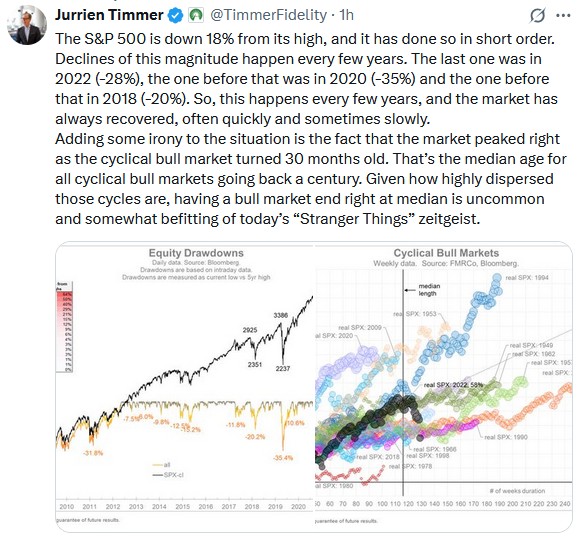For those of you with bearish nightmares, we share one important takeaway from Monday’s market roller coaster. While there is a good chance the market may explore new lows over the coming months, we must appreciate that there is plenty of fuel for a sizeable bounce. The one piece of important evidence supporting this thesis was a Tweet claiming that Trump is considering a 90-day pause in all tariffs except those on China.
As the graph below shows, the S&P 500 rose 8.5% in a half an hour, solely based on one non-official Tweet. Furthermore, there was no corroboration from mainstream media or the White House. Once debunked, the S&P 500 gave up two-thirds of the gain. But it finally found some stability.
Whether the administration planted the Tweet or it was fake news designed to reap a quick profit, the one important lesson is that the market anxiously awaits positive tariff news to buy aggressively. Moreover, note that the 8.5% rally occurred despite the Tweet claiming that all tariffs remain on China. As we saw on Tuesday, any signs that China is willing to deal could erase some of the damage we have witnessed over the past week.
The recent bearish trend may not be over even if we get friendly tariff news. Significant technical damage has occurred. Furthermore, the economy is weakening, and the Fed, at least for now, doesn’t appear willing to cut rates.
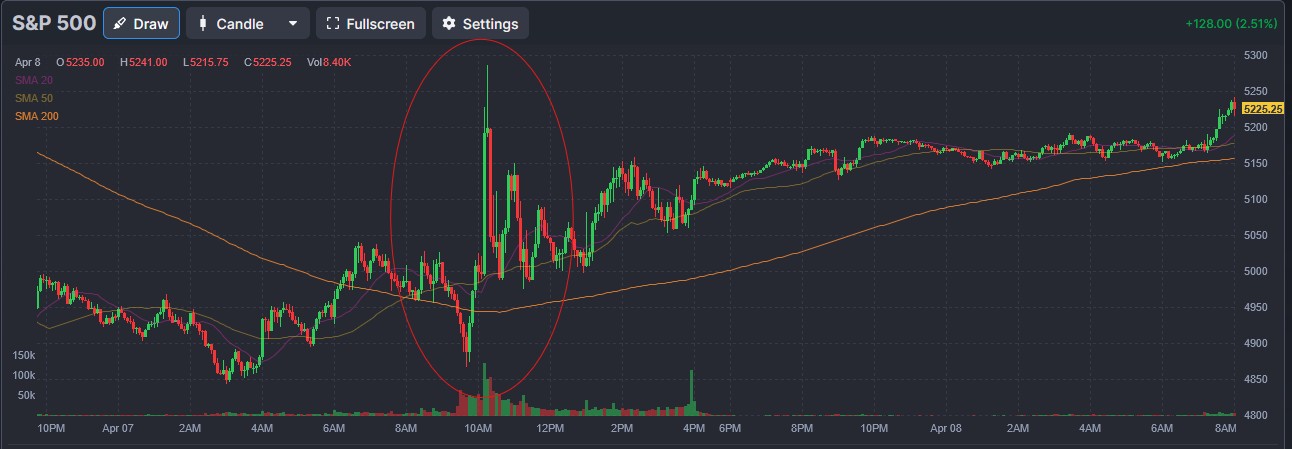
What To Watch Today
Earnings
- No notable earnings releases today
Economy

Market Trading Update
Yesterday, we discussed the process we will follow on a significant market rally, and all it will take is some good news on the tariff front. So far, we have not gotten that as of yet. The market tried to rally early yesterday morning but was swatted down by the escalation of tariffs on China.
With no sign that China will negotiate, the pressure remains on the market. But importantly, it is not just one market under pressure but all markets, as shown. In other words, there has been no safe hiding place, even for the ultimate “safe-haven” asset.
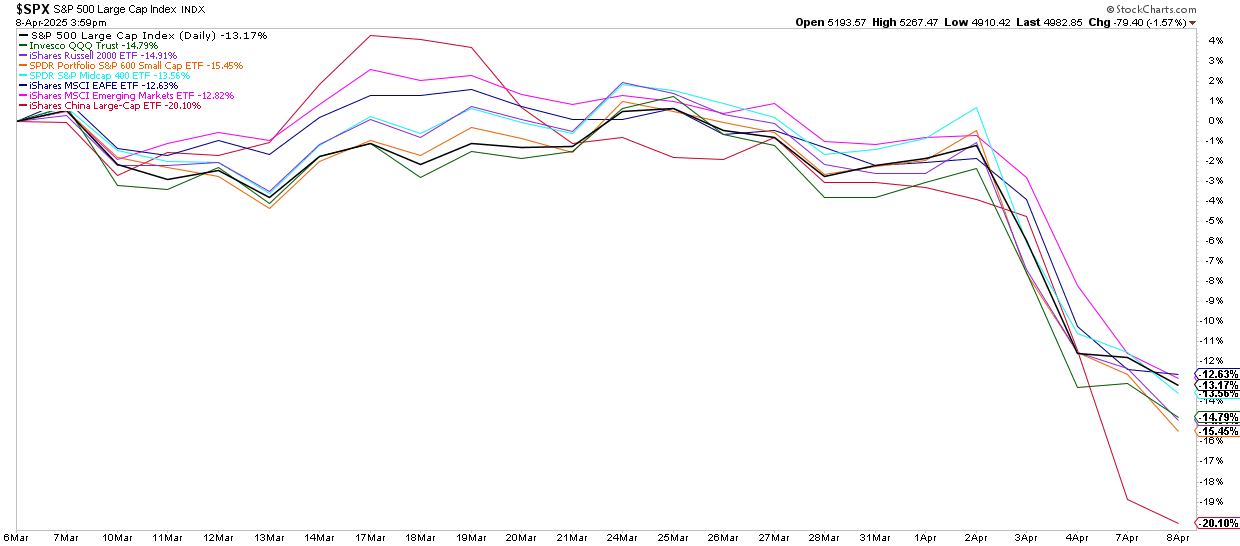
As noted, the bond market, which is the only “risk-free” investment, has also been under considerable pressure over the last two days. On Monday, Treasury bonds had a sharp decline far outside of what the economic or tariff data suggested would be the case.
We suspect that on Monday, there was forced liquidation through either margin calls or demand redemption of an institutional fund. The outsized selling and volume on a single day for bonds is highly unusual. The media excuses of “tariffs” or “economic concerns” are issues the bond market has known about for quite some time.
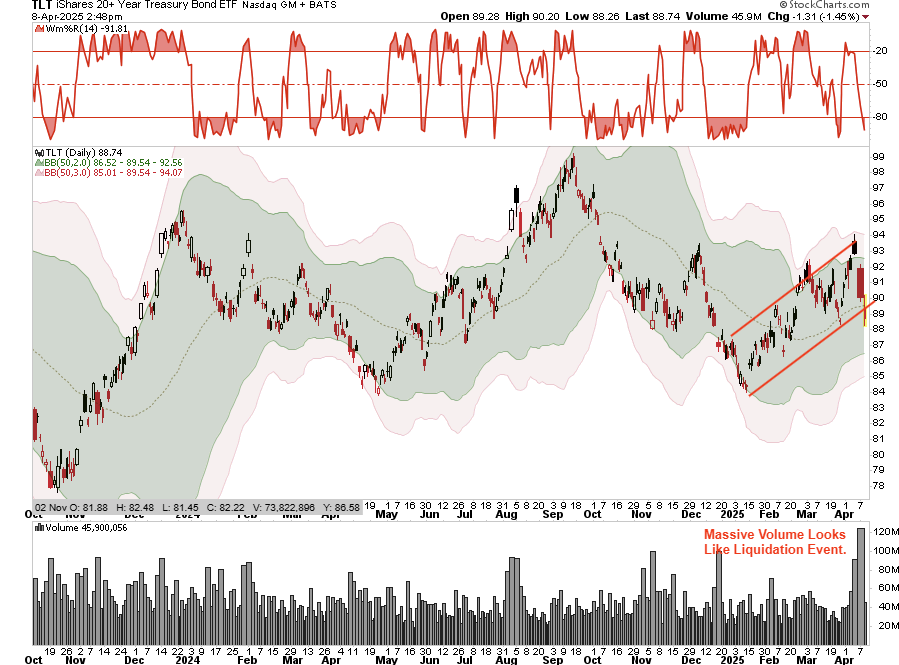
Last week, in our Before The Bell segment, I noted that bonds were overbought, and we could see a rotation with oversold stocks. With bonds in an uptrend from the 2025 lows, they are now oversold and present a better entry opportunity than last week. With the Fed set to cut rates and the risk of recession on the rise, the outlook for yields remains optimistic. Furthermore, we suspect that bonds’ “safe-haven” nature will regain its stature if the market decline continues.
Regarding the S&P 500 specifically, despite the complete reversal of gains yesterday, market breadth signals that we are likely closer to a near-term bottom than not. While the sell-off is certainly weighing on our emotions, selling at this level may alleviate some short-term pain, but will likely lead to missing out on a substantial rally that would provide a better exit point.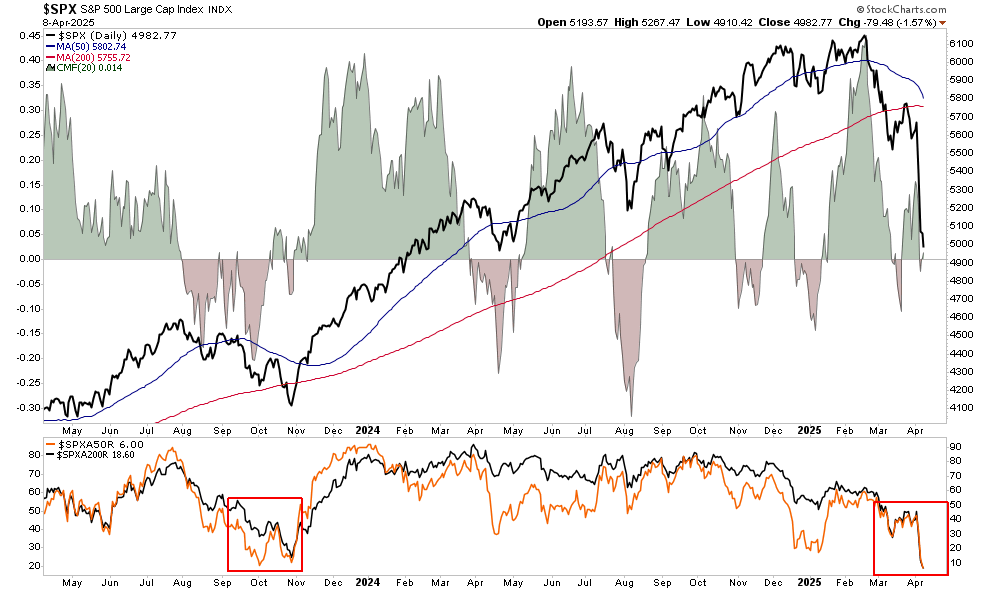
Given the deep oversold conditions and the continued negative newsflow from the White House, as we saw on both Monday and Tuesday, any small piece of positive news is going to lead to a vicious rally. Use that rally to reduce risk and raise cash levels. Continue to disregard the majority of media headlines. Stock and bond market volatility has not been this high without a nearby bottom in prices.
Remain patient, even though it’s difficult right now.
Wall Street’s Principal Agent Problem
It’s rare to hear a Wall Street analyst predict a bear market. Moreover, it’s even rarer for Wall Street to have anything but a buy recommendation on individual stocks. For example, the heat map below, courtesy of FinViz, shows the average Wall Street analyst recommendation for each of the S&P 500 stocks.
Per the scale at the bottom right, the brightest green is for strong buy recommendations. The color spectrum fades to a darker green than red as the recommendations turn less bullish. Virtually every one of the S&P 500 stocks is green. How can almost all 500 stocks from diverse industries and unique financial situations have buy ratings? The answer is the principal-agent problem.
Wall Street has a significant conflict of interest. Better known as the principal-agent problem, Wall Street must serve two distinct types of clients. Two of Wall Street’s primary sources of revenue are from trading and capital raising. For Wall Street to earn business from companies needing capital, those companies demand Wall Street to make them look good.
Consequently, this results in inflated ratings. However, Wall Street also advises investors. This provides trading income. By and large, Wall Street executives have found that the policy that works best for their bottom line is to be permabulls. This way, investors are more likely to be active, and companies looking to raise money have more willing buyers.
The principal-agent problem clouds Wall Street’s market views. Being bearish is not in their best financial interest. Accordingly, take their advice with a grain of salt!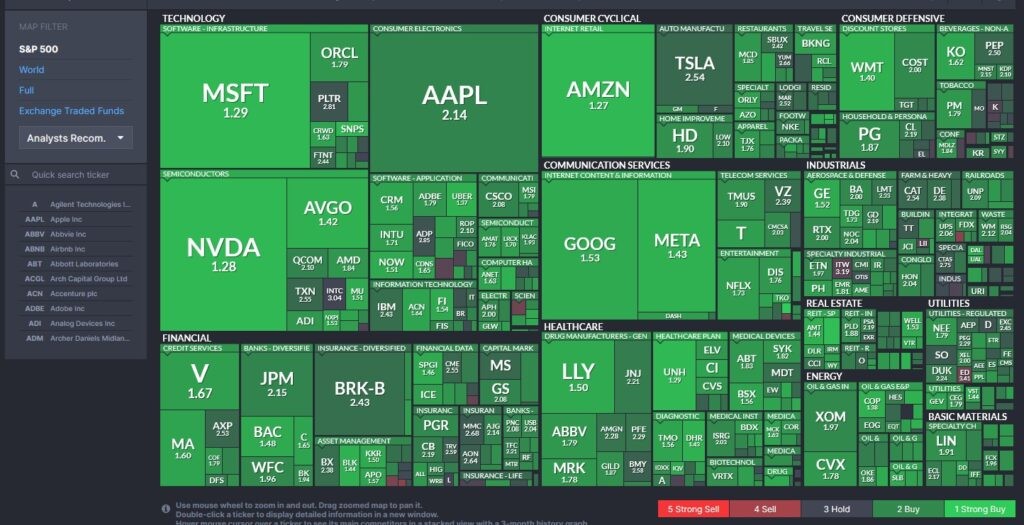
Tweet of the Day
